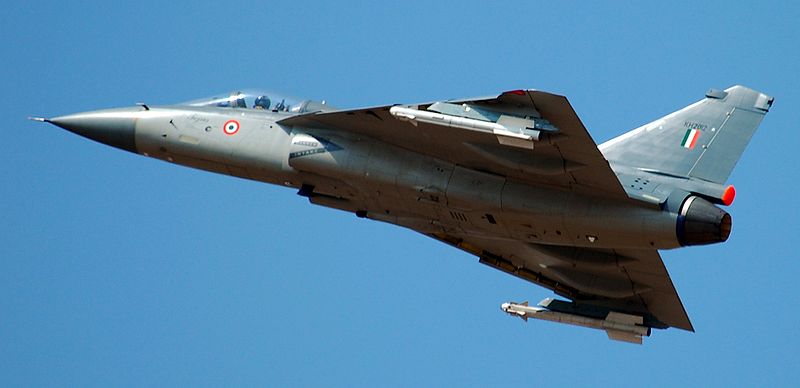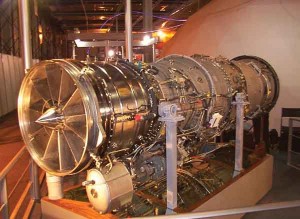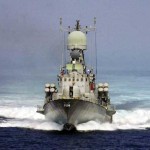An ambitious project like the LCA is fraught with risks, more so when the design and development teams are venturing into uncharted waters driven by an insistence to forego any external help. Under such conditions the DRDO’s projections of timelines could at best be termed ‘optimistic’ by any standards. The Government was itself skeptical about the potential and capabilities of the scientific community to come together with the development of the airframe, engine, flight control software and multi-mode radar and get the LCA to fly.
An Unending Programme
“India’s Light Combat Aircraft (LCA), Tejas, is to enter service shortly and two squadrons of this aircraft will be stationed at the Sulur Air Base near Coimbatore in Tamil Nadu,” screamed the headlines of a leading national daily. Another reported, “The Defence Minister AK Antony stated in Parliament in August 2011 that the Tejas Mk I would be ready for induction into the Indian Air Force (IAF) by March 2012.”
The primary goal of the LCA programme was to roll out an indigenous replacement for the MiG-21 fighter…
Statements and timelines such as these and various other milestones have featured in the media with predictable regularity. Despite assurances by the Defence Minister and the Defence Research and Development Organisation (DRDO), the LCA is yet to become operational even after two decades of being under development. The cost of the programme has also ballooned with the years. The Defence Minister stated recently that in 2001, the LCA programme had been estimated to cost Rs 33 billion but cost overruns had added an additional Rs 24.8 billion due to the expanded scope of the programme, increased cost of materials, manpower and maintenance of facilities. Military and civil aviation history is replete with examples where development of a new aircraft has suffered delays with costs far exceeding original estimates. Will the LCA have the dubious distinction of having the longest gestation period?
Development Objectives
A cursory examination of the genesis of the LCA programme would indicate that the original timelines for development were extremely over-optimistic and not in consonance with the capabilities of the design, development and manufacturing agencies involved in the programme. Launched in 1983 with two major objectives, the primary goal of the LCA programme was to roll out an indigenous replacement for the MiG-21 fighter, the mainstay of the IAF since the early 1970s. The IAF had projected that the MiG-21 fleet would reach the end of its life by 1990 and by 1995, the force structure of the IAF would have reduced to 60 per cent of its authorised strength if not augmented by a modern fighter. The MiG-21 fleet was to be replaced by the LCA, a state-of-the-art fighter which would match any modern combat aircraft in the world at that time. Estimates put the IAF’s requirement of the LCA as 200 single-seat and 20 two-seat aircraft.
The second objective of the LCA programme was not merely limited to the design and production of a new fighter aircraft. DRDO saw the LCA project as the formation of a national asset, the coming together of an integrated scientific/industrial combine with the capability to design and produce in vast numbers all the elements which go to make a state-of-the-art modern fighter. India would have a new technology base to independently develop modern composite material airframes, an afterburning jet engine, fly-by-wire technology and software, avionics, fire control systems, a multi-mode airborne radar, electronic warfare suites and a host of other components. Since Independence, India has aspired to be at least partially self reliant in respect of weapon systems. HAL had pursued this objective and produced under license the Folland Gnat and the indigenous ground attack fighter, the HF-24 Marut which saw service during the 1971 War with Pakistan.
There was a design hiatus for over two decades and the LCA offered the next opportunity for India to be a producer of aircraft instead of being merely a buyer. The scientific community thus saw the LCA programme as the route to building a modern technological conglomerate covering the whole spectrum of disciplines necessary for the design and manufacture of modern military aircraft. The Government appreciated the risks involved in such an approach as India had very little expertise in any of the disciplines required for the development of the LCA. Air Marshal Philip Rajkumar (Retd), who was closely associated with the development of the LCA, states in his book titled “The Tejas Story” that the complexities inherent in designing a new fighter from scratch are formidable even for a light-weight fighter like the Tejas. The Indian industry had significant experience deficits going into this project which delayed the project significantly and raised costs. The insistence in pushing the envelop with a new airframe design using large sections of composite structures, a new untested jet engine with no organisational experience in this discipline and in-house development of an airborne multi-mode radar have all contributed to delays and cost overruns. The end result is that the LCA has not been able to replace the ageing MiG-21.
A Monumental Task Ahead
An ambitious project like the LCA is fraught with risks, more so when the design and development teams are venturing into uncharted waters driven by an insistence to forego any external help. Under such conditions the DRDO’s projections of timelines could at best be termed ‘optimistic’ by any standards. The Government was itself skeptical about the potential and capabilities of the scientific community to come together with the development of the airframe, engine, flight control software and multi-mode radar and get the LCA to fly.
The LCA offered the next opportunity for India to be a producer of aircraft instead of being merely a buyer…
In 1983, DRDO obtained permission to initiate a programme for the design and development of a Light Combat Aircraft with the initial flight in 1990 and entry into service by 1995. The project was to be managed by a nodal agency, the Aeronautical Development Agency (ADA) and the Hindustan Aeronautics Limited (HAL) was to be the principal contractor with the primary responsibility for design and system integration, airframe manufacturing, final assembly of the aircraft, flight testing and technical support during service. The National Aeronautics Laboratory (NAL) in conjunction with ADA was to develop the Flight Control Systems (FCS) which included flight control laws and the fly-by-wire system. HAL and Electronics and Radar Development Establishment (LRDE) were to develop the multi-mode radar and Gas Turbine Research Establishment (GTRE) was tasked to design and develop the GTX-35VS Kaveri afterburning engine. Conceptually, this arrangement provided a building-block for the second objective of the LCA project which was the emergence of an aviation and aeronautical conglomerate in India which could hold its own against what the West or Russia could offer. However, these agencies did not evoke the same level of enthusiasm in the IAF in their ability to build a state-of-the-art fighter. The Air Staff Requirements (ASR) were finalised by the IAF in 1985 and it was only to be expected that the IAF would incorporate a wish list of capabilities to meet its operational needs in the foreseeable future. The Project Definition commenced in October 1987, and was completed a year later. This phase defines the detailed design, manufacturing and maintenance requirements and provides critical inputs for the overall project costs. Dassault Aviation was hired to review the project and the design was finalised only in 1990. The IAF had reservations about the technological capabilities of DRDO and HAL to design and manufacture the LCA but a Governmental review committee formed in 1989 was of the view that DRDO had acquired much of the technological competence to undertake the project. However, it was decided that as a matter of prudence, full scale engineering development would be undertaken in two phases as under:-
Phase I would focus on “proof of concept” with the design, development and testing of two Technology Demonstrators (TD-1 and TD-2) after which two Prototypes (PV-1 and PV-2) would be made.
Phase II would entail building three more prototype versions, including the production model (PV-3), the naval variant (PV-4) and a two-seat trainer (PV-5).
Dilemma for the IAF
The IAF did not place any firm orders for the LCA in the early stages and adopted a “wait and watch” policy. Viewed in retrospect, it is apparent that there were reservations on the capabilities of ADA and other agencies involved in the LCA project which may not have been stated in so many words but were reflected in the policy decisions.
The Indian industry had significant experience deficits going into the LCA project…
Phase I of the development commenced in 1990 and HAL started work on TD-1 and TD-2 in mid-1991. On November 17, 1995, the first LCA TD-1 was rolled out with much fanfare and TD-2 was rolled out in 1998. The first flight of TD-1 could take place only on January 04, 2001 due to a number of reasons including the financial crisis of 1991, the imposition of sanctions post-1998 nuclear tests and delay in the development of the Kaveri engine. By April 2012, different versions of the LCA including the naval version, have flown 1,821 sorties albeit with the GE 404 engine and Israeli IAI’s EL/M-2032 multi-mode radar. This is proof that the secondary objective of the LCA programme of building India’s aviation technology has been achieved to a great extent. The prime objective of providing the IAF a replacement for the MiG-21 fleet and a modern light-weight combat aircraft for the IAF and the Indian Navy remains a distant dream.
The combat potential of the IAF is depleting rapidly and the fighter fleet may reduce hitting a low of 29 squadrons in the next five years as the MiG-21 and MiG-27 squadrons are retired from service without replacement. The Rafale has emerged as the winner in the Medium Multi-Role Combat Aircraft (MMRCA) tender. Hopefully, the Rafale will fly under Indian colours in the near future but delivery schedules are dependent on finalisation of contract and establishment of facilities at HAL for licensed production. The IAF leadership has acknowledged the reduction in the number of combat aircraft but has indicated that the combat punch in war will be maintained as a result of the upgrades on the fleet of Mirage 2000, MiG-29, Jaguar and Su-30. However, in war, numerical superiority is as critical as technological capability and in this respect, the IAF is likely to be in difficulty.








Indian Air Force officers get commisson from the outside companies for their pie, and DRDO is the white elephant they dont want to work even our PILOTS flying and crashing in the Death coffins.
Why this project not given to the private companies? and Allow 100% FDI in HAL, NAL, and DRDO, because scientist of these PSU are eating and sleeping and vote bank,they dont know how vunerable India is becoming to the PAK, CHINA and Terrorists and even Bangladesh and shrilanka also knew this.
The entire process was lop sided as DRDO wanted to have cushy life and promotions of its scientists yearly. Schedules are focused on personal growth ONLY. Private players were not serious as typically, even now, DRDO goes for L1 mindset rather than assessing suppliers properly. Passing the busk to suppliers is a classic escapist attitude even now. How can India develop and fly a safe LCA. Politicians want to declare LCA ready added comfort to DRDO heads anyway
It is a well established fact that HAL always arm twisted the IAF in accepting aircrafts built by it to justify its existence.
Over 4 decades of their existence failed in ANY of its Scientists developing any thing more than copying, that too with deficits.
But the biggest shame DRDO/HAL have brought on themselves is the denial, non acknowledgement of its failures and lies it perpetrated to harness monies that were for procurement of trainers. Due to their want to HIDE THEIR FAILURES, cropped up lies and lastly lead to no improvements nor re researching but figment of imagination flights and more lies.
What would have been fruitful to India by her procuring trainers was now wasted as no one wanted to talk of the failures, thus the re routing. The trainers were denied to the IAF, causing young men who would have been assets to the country to be murdered by their own. DRDO embezzled thru its brainwashing, lies and insistence that the LCA will be ready thus denying the basic rights of proper training to young men and women. Here of course the silence of the higher echelons of the IAF especially the chiefs also portrays that they could not stop the murders of young boys by asking them to fly without proper training
What India’s adversaries would want to achieve, DRDO/HAL achieved 2 folds and from within!
Since in inexperienced pilots were flying the Mig 21 without proper training due to DRDO’s lies, mass hysteria was created against the Mig 21, India’s backbone. IAF’s image took a big hit and youngsters refrained from joining the services.
So no trainers, less pilots, more deaths and bad image….all because DRDO and HAL wanted to save their jobs!
Not one Air Chief had it in him to tell the Govt that the IAF is not a suicidal kamakazee unit and he as chief CANNOT allow his young to fly to their deaths and also lose assets of the IAF due to DRDO’s insistence and fanciful LCA flights of imagination,that Either the Govt shud procure the trainers or disband d IAF
This paper is mostly “BS” of a negative kind.
Think for a moment; a very advanced country like US has not finished developing F-22 after 22 years. The pilots in F-22 are passing out without oxygen during flight. There are host of other problems which Americans do not discuss. Their F-35 after two decades is still a “paper tiger”.
Building your own fighter from scratch and against a backdrop of technical sanctions. A LCA test model was impounded by President Clinton for three years in New York from 1998 onwards. They did not like the indian nuclear test.
The local engine has been subjected to countless sanctions to prevent it from development. I wish Indians had been less nice and like Chinese stolen the technology anyway. But the indians did not. Sanctions were removed only when India bought the relavant GE engine.
In the backdrop of these so many road blocks, the good Air Commodore Menon should be proud that LCA got completed anyway.
It is a replacement of MIG-21; it is also a very powerfull, technically superior plane with all kinds of new technologies in it which cannot be found in Chinese copies or elsewhere.
In the end; think of experience the Indian plane builders have acquired.
Cheers
Hari Sud
nicely put up Mr Sud. We should not close our eyes to the efforts of so many technicians, engineers and pilots.
How does the IAF produce so many cry babies ? Quite an achievement indeed. Complaining about other agencies has been converted into a habit by these worthies. Those who have not helped at all in developing domestic capabilities get to comment on those who are giving their best !! These jokers should know that it is not without consequences. Time will show these dimwits their true position. Meanwhile the best they can do is shut up and mind their own business viz. import and imbibe (intoxicants, inducements etc)
another B!tchocrats ……..I don’t think pu$$y farts like you know what it is to put your lives on the line. get off your mother T!t put your ba!!s on the line and then talk.